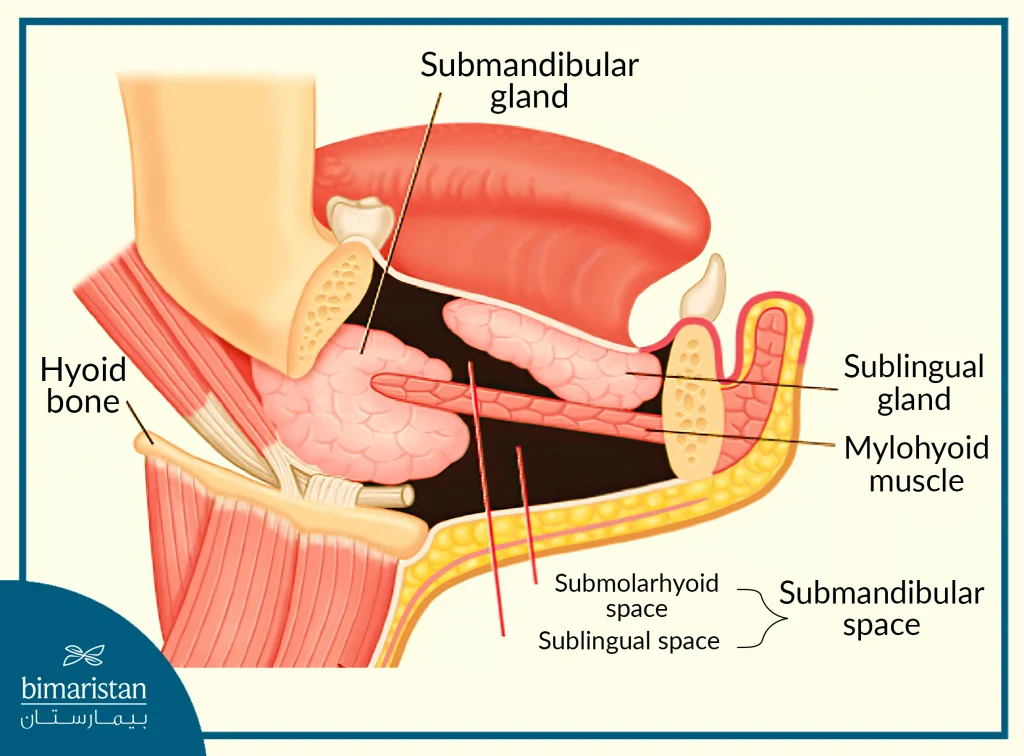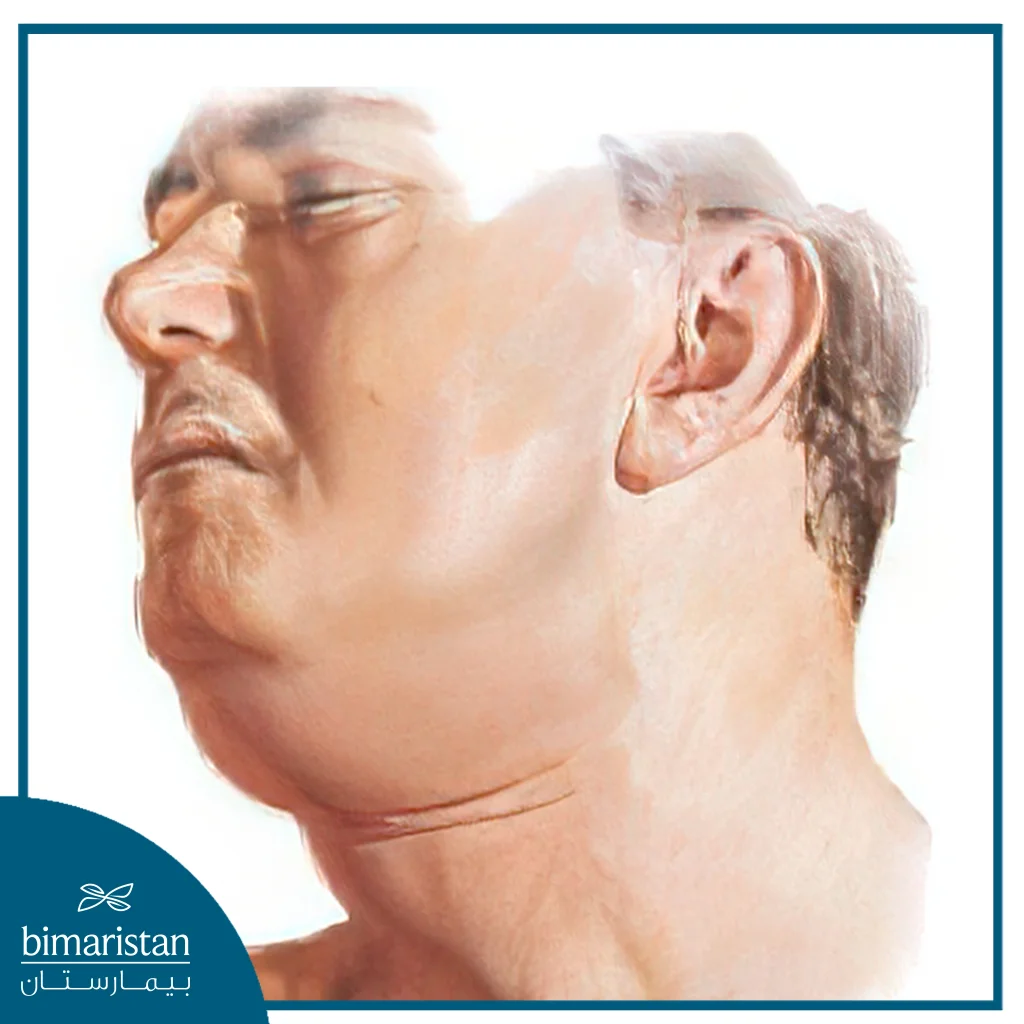Ludwig’s angina is a serious, rapidly spreading infection that causes swelling in the neck, which can lead to suffocation. Surgery in Turkey is the best solution in severe cases.
Overview of Ludwig’s angina
The neck area is important for the presence of lymph nodes and connective tissue spaces that are susceptible to infection due to its close contact with the upper respiratory tract and the digestive tract.
The oral cavity is one of the most common areas for harboring infection due to exposure to many factors, such as problems with the periapical areas of the teeth and poor oral health. Therefore, it is important to conduct examinations of the entire oral cavity, from tooth decay to the floor of the mouth, to detect the presence of edema that may pose a threat to the upper respiratory tract.
This angina is a rare bacterial infection that causes a severe, life-threatening mouth, jaw, and neck abscess. Studies have shown that this serious condition is more common in men and adults and has an onset at a variety of ages.

The angina is a type of cellulitis that occurs in the spaces under the lower jaw, under the tongue, and under the chin. It is characterized by its rapid spread to the tissues, and appears as swelling in the area under the lower jaw with an elevation in the floor of the mouth and tongue, which may lead to difficulty breathing or even complete obstruction if left untreated.
Causes of Ludwig’s angina
Poor oral hygiene and bacteria resulting from dental infections; Ludwig’s angina can occur in the presence of cavities or dental abscesses (usually in the area of the second and third molars) or in the presence of inflammation in the gums or tissues supporting the teeth.
Streptococcus and staphylococcus bacteria, especially Streptococcus viridans, Staphylococcus epidermidis, and Staphylococcus aureus, are the most common types of bacteria that lead to this angina.
What increases the risk of developing Ludwig’s angina?
You may be at risk for it if you have any of the following:
- Jawbone fracture
- Tongue piercing
- Jawbone infection
- Mouth infections
- Tonsill abscesses
- Salivary gland infections
- Thyroid cyst
Signs and symptoms of Ludwig’s angina
Ludwig’s angina usually includes fever, mouth pain, neck swelling, and tongue swelling. Other symptoms that may occur include chills, neck pain and stiffness, sore throat, pain and difficulty swallowing, drooling, difficulty opening the jaw, difficulty speaking, and ear pain.
In severe cases of this angina, or when left untreated, symptoms can include:
- Chest pain
- Severe difficulty breathing
- Confusion and difficulty concentrating
- Severe dehydration

How is Ludwig’s angina diagnosed in Turkey?
By a physical examination performed by the doctor of the neck, jaw, lymph nodes, and examination of the inside of the mouth, chest, and lungs, in most cases this physical examination shows symptoms sufficient to diagnose the angina.
A blood and saliva culture may be requested to check for bacteria if the diagnosis is not confirmed. A CT scan or MRI using contrast dye may also be performed, as these procedures examine the mouth, neck, and jaw to look for swelling, gas, pus, or inflammation.
Complications of Ludwig’s angina
When Ludwig’s angina is treated promptly, a good recovery can be expected with little or no side effects. However, if left untreated, there are many serious complications associated with Ludwig’s angina that may be life-threatening, such as:
- Septic shock
- Pulmonary infection with pus
- Suffocation
- Heart infection or injury
- Blood clot in the neck
- Carotid artery aneurysm and swelling
- Pectoral infection
These complications may lead to premature death due to the rapid spread of the infection and blocking the passage of air for breathing, so immediate treatment of Ludwig’s angina is the best course of treatment.
How to treat Ludwig’s angina in Turkey
Ludwig’s angina should be treated promptly. It is a serious, rapidly spreading septic infection that may affect the airway, so it is first ensured that the patient can breathe properly.
Cleaning the airway
If the swelling interferes with breathing, the first goal of treatment is to clear the airway.
A breathing tube may be placed through the mouth or nose if breathing is partially restricted. If breathing is severely restricted, the patient may undergo surgery to cut a trachea and insert a breathing tube into the trachea. This procedure is called a tracheotomy.
Draining excess fluid
Ludwig’s angina causes fluid to build up in the neck and jaw area, so it is important that the doctor makes a surgical incision in the area to drain this fluid so that the patient can breathe more easily.
Controlling infection
You will likely need intravenous antibiotics until your symptoms go away. You will then continue to take antibiotics by mouth until tests show that the bacteria have gone away to ensure that your symptoms do not return.
You will also need treatment for any additional dental infections.
Additional treatments
You may need treatment for the tooth that caused your Ludwig’s angina, and if you still have swelling, you may need to have the fluid drained that caused the swelling.
Preventing Ludwig’s angina
In most cases, you can help prevent this rare but serious skin infection from occurring.
- Try to avoid tongue or mouth piercings because these piercings can allow bacteria to invade your jawbone and soft tissue. If you have any toothache, gum disease, or loose teeth, make an appointment with your dentist as soon as possible.
- Good oral hygiene should be your first line of defense. Make sure to brush and floss your teeth every day.
- See your dentist regularly to check for cavities, abscesses, or plaque buildup.
With good care and a healthy diet, you can reduce your risk of developing Ludwig’s angina.
Sources:
